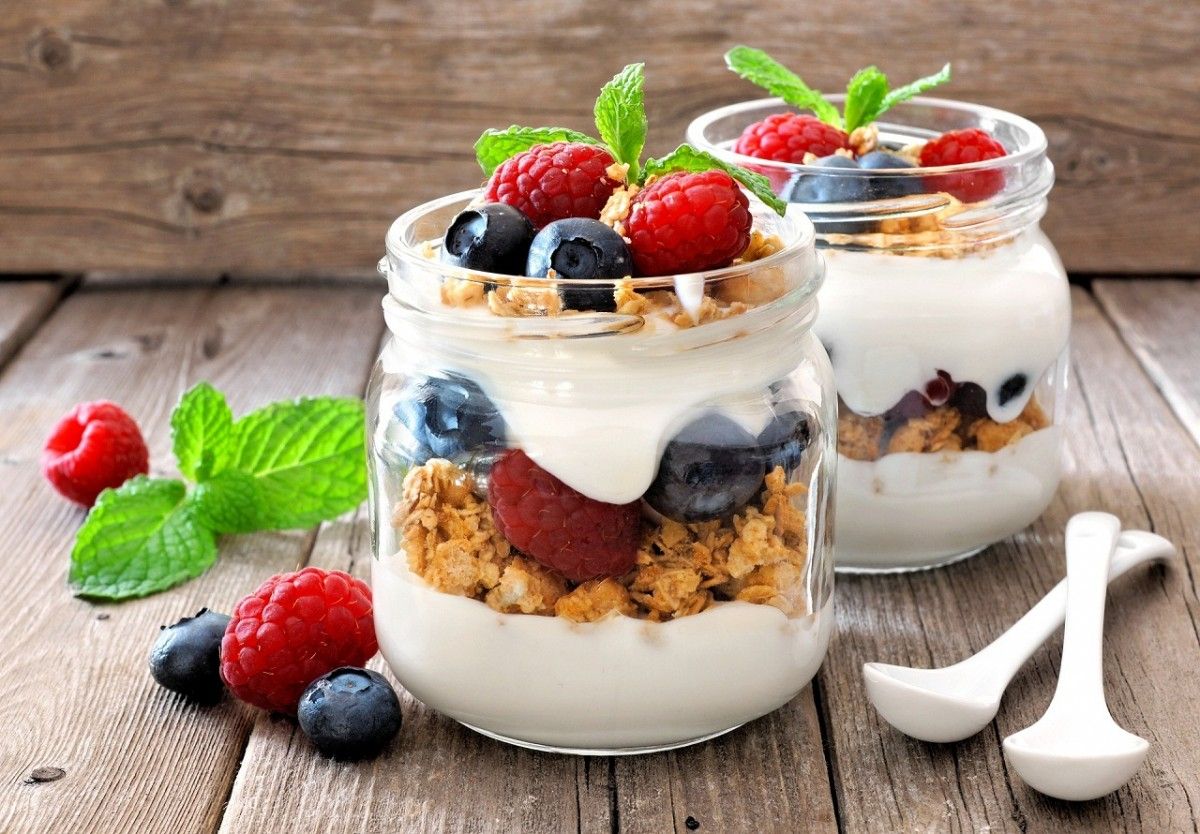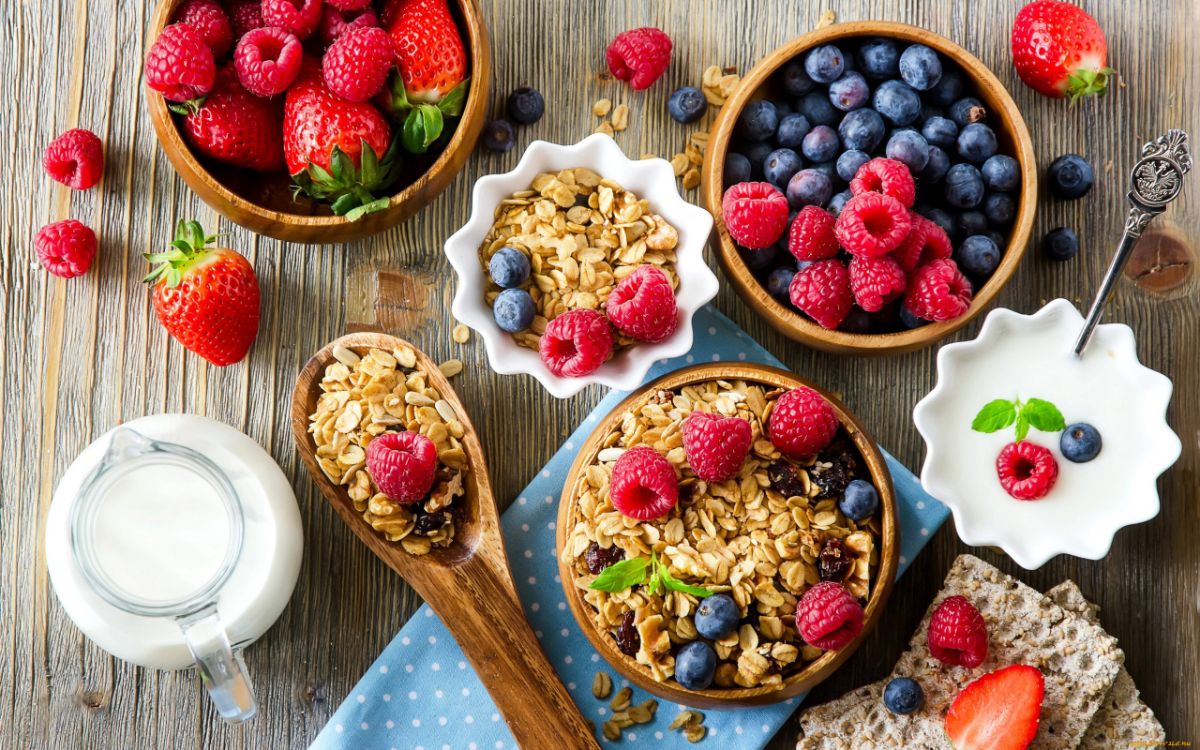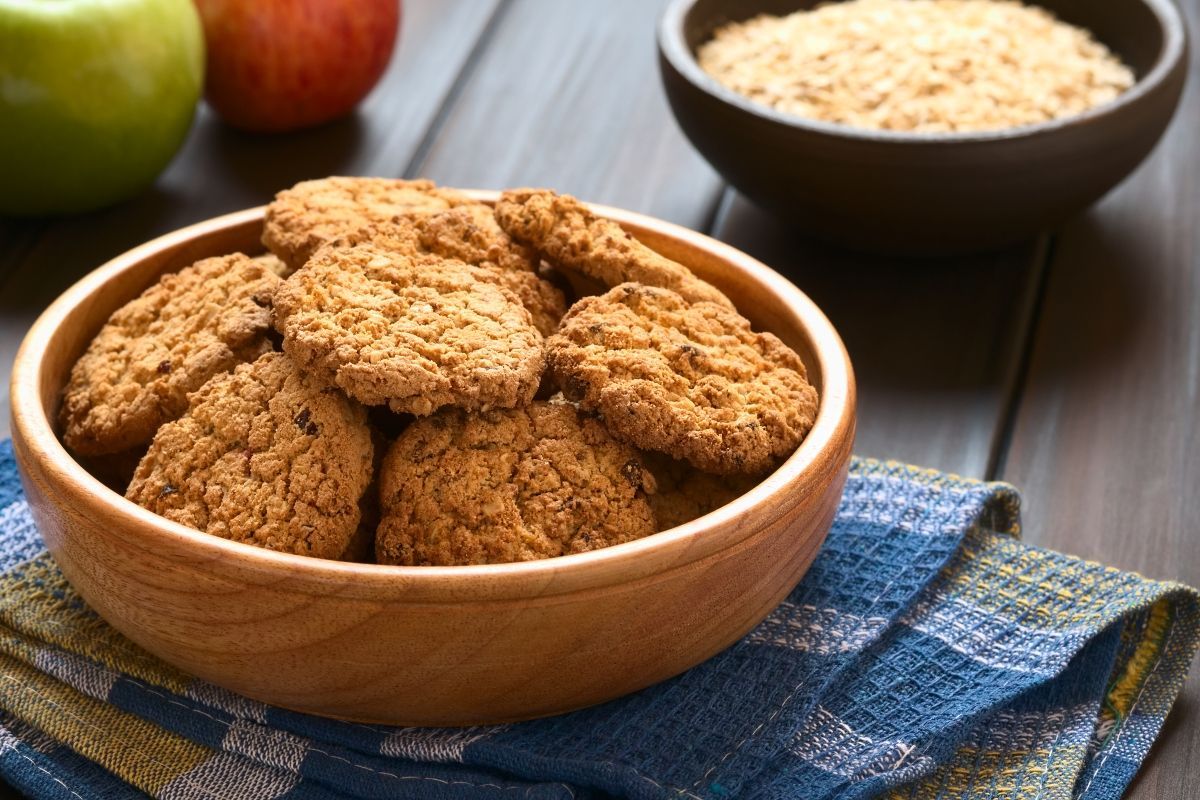Wholemeal bread — 6 useful properties, composition and recipe
Whole grain bread has been widely recognized by followers of proper nutrition. The coarse flour used for its preparation retains a significant proportion of dietary fiber, vitamins, minerals and antioxidants, which are beneficial to health.
Content
What is whole grain bread?
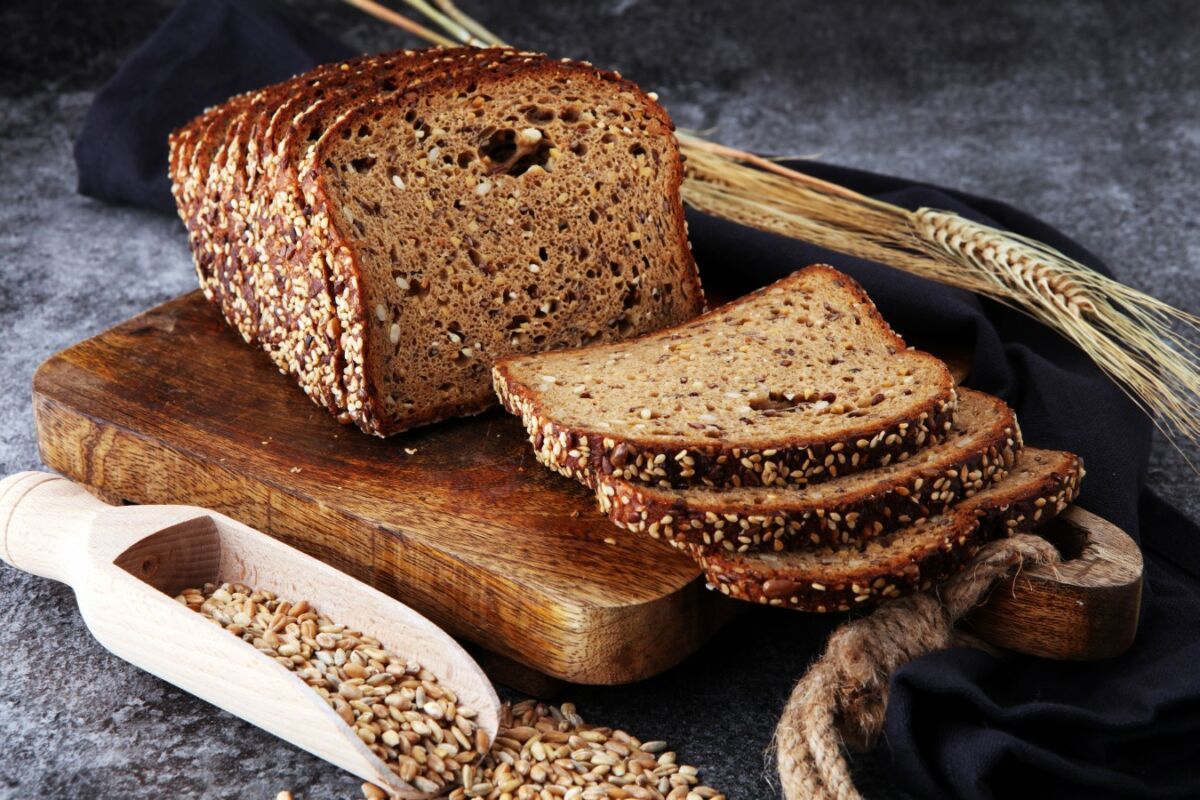
Wholegrain bread is bread made from partially or completely ground flour from whole or almost whole wheat grains.
Unlike the usual white bread, whole grain bread is baked from flour based on whole grains containing, in addition to the endosperm, germ and bran. Bran rich in fiber , some minerals and antioxidants, and the germ is the main source of vitamins from cereal plants. That is why whole grain bread is considered healthier than white bread.
Not only wheat can serve as a grain for making whole grain flour. Manufacturers often add millet, corn, rye and oats, as well as some other crops.
Externally, the product does not differ much from ordinary bread, it may have a darker color and a rough structure.
At the same time, it is necessary to read the product label to determine its true composition. The presence of a sprinkle of seeds, poppy seeds or cumin, bran, says nothing about the flour, which is used as a basis for making bread. In this way, manufacturers only artificially add naturalness to their product.
Composition and calorie content
 The ratio of nutrients directly depends on the type of grain used. "Average" whole grain bread contains:
The ratio of nutrients directly depends on the type of grain used. "Average" whole grain bread contains:
- Dietary fiber;
- Vitamins (A, C, B groups);
- Minerals (manganese, phosphorus, zinc, iron, copper, magnesium);
- Proteins;
- Antioxidants (phytic and ferulic acids, lignans).
Fiber Supports digestion , proteins serve as an important building material, and antioxidant compounds hindered the development of malignant tumors and some chronic diseases.
Whole grain bread has a low calorie content (247 calories per 100 grams) and an average glycemic index (about 40-50). For comparison, the glycemic index of white bread is 70.
6 useful properties
The scientific community relies in its research on the main component of bread – whole grains, which practically do not lose their properties during cooking. They are responsible for the benefits of whole grain bread. Let's look at it in more detail.
1. Improves the health of the heart and blood vessels
 Cardiovascular diseases are still the leading cause of death in all developed countries. Installed
that the intake of whole grains helps to prevent the development of this group of pathologies.
Cardiovascular diseases are still the leading cause of death in all developed countries. Installed
that the intake of whole grains helps to prevent the development of this group of pathologies.
Major literary reviews show that regular consumption of whole grains (28 grams per day) reduces the risk of cardiovascular diseases by 22%.
If you replace almost all carbohydrates in the diet with whole grain products, then the probability of developing heart and vascular pathologies is halved. Such amazing results received in the course of research by Spanish specialists.
Whole grain bread reduces the risk of deposition of cholesterol crystals in the walls of arteries and regulates blood pressure (preventing sudden spikes). As a result, conditions are not created for the formation of the most common and dangerous diseases.
2. Reduces the risk of stroke
 Proven
the ability of whole grain bread to prevent strokes.
Proven
the ability of whole grain bread to prevent strokes.
Regular intake of any products based on whole grains, according to foreign studies, reduces the risk of vascular catastrophe by 14%.
Iranian experts claim that whole grain products are the optimal source of antioxidants, vitamins, calcium and potassium, which normalize metabolic processes in brain tissues, strengthen blood vessels , maintain the strength and elasticity of capillaries.
Such dishes must be present in the diet of older people, especially if there has been a vascular catastrophe before.
3. Helps to control weight
 Fiber is the main component of food that helps you quickly saturate
the body and eliminate overeating.
Fiber is the main component of food that helps you quickly saturate
the body and eliminate overeating.
Dietary fibers instantly fill the stomach and create mechanical pressure on its walls. As a result, through reflex and neurohumoral mechanisms, hunger centers in the brain are suppressed, and cravings for food decrease.
In the works of British specialists, taking only 75 grams of bread per day allows reduce not only body weight, but also the amount of fat in the abdominal area. Abdominal fat is considered the most dangerous because it is associated with a high incidence of cardiovascular disorders.
At the moment it is reliable installed the relationship between the abundance of whole grain products in the diet and the low incidence of obesity.
Whole grain bread can be used for weight loss, as it suppresses appetite.
4. Fights diabetes mellitus
 Numerous foreign studies demonstrate
the ability of whole grains to prevent the development of a formidable endocrine disease – type II diabetes mellitus. Norwegian scientists emphasize that only 50 grams of product per day is sufficient to achieve the effect.
Numerous foreign studies demonstrate
the ability of whole grains to prevent the development of a formidable endocrine disease – type II diabetes mellitus. Norwegian scientists emphasize that only 50 grams of product per day is sufficient to achieve the effect.
At the heart of positive action lies the presence of dietary fiber and some minerals (magnesium) in the composition. They slow down the absorption of simple carbohydrates from the intestine (providing prevention of sudden spikes in blood glucose levels), and also increase the sensitivity of muscle and adipose tissue cells to insulin.
Whole grain bread fights the main pathogenetic mechanism of the formation of type II diabetes mellitus – insulin resistance.
The second feature of the product is body weight reduction. It is overweight that is one of the main risk factors for the early formation of diabetes mellitus.
5. Improves digestion
 Fiber, which is abundant in whole grain bread, is necessary for the proper functioning of the intestine.
Fiber, which is abundant in whole grain bread, is necessary for the proper functioning of the intestine.
Dietary fiber improves motor evacuation function, ensuring complete and timely excretion of feces from the body.
Also fiber is food for friendly microorganisms, helps to reduce the number of pathogenic and opportunistic inhabitants of the intestinal microflora. As a result, infectious and inflammatory lesions of the intestinal wall of any genesis are less likely to develop.
6. Reduces the risk of developing cancer
 Opinions regarding the effectiveness of whole grain products in the prevention of malignant tumors are ambiguous. Single studies indicate
on their positive role.
Opinions regarding the effectiveness of whole grain products in the prevention of malignant tumors are ambiguous. Single studies indicate
on their positive role.
For example, detected there is a direct link between the high frequency of consumption of this bread and the rare occurrence of tumors of the distal colon.
The antitumor activity of the product is caused by: fiber, phytic and phenolic acids, saponins.
Contraindications
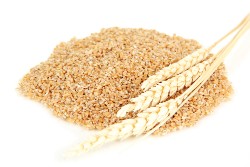 Whole grain bread is not a harmless product. In some cases, it can be harmful to health. The main contraindications are:
Whole grain bread is not a harmless product. In some cases, it can be harmful to health. The main contraindications are:
- Gluten intolerance. Whole rye, wheat, barley are sources of protein (gluten), which is not tolerated by about 1-5% of the world's population. Such people develop a lot of unpleasant symptoms when taking whole grain products: from fatigue and joint pain to severe dyspeptic disorders.
- Irritable bowel syndrome. Some cereals (for example, wheat) contain short-chain fatty acids, which enhance the symptoms of this disease.
When taking the product, chronic diseases of the stomach and duodenum (chronic gastritis or gastroduodenitis, peptic ulcer) may worsen. Whole grain bread can cause micro-damage to the mucous membranes, as well as increase the acidity of gastric juice.
Bread, in the absence of the above contraindications, can be safely consumed during pregnancy and breastfeeding.
How do I choose it in the store?
 Buying bread that is truly valuable for health in the store is not an easy task. Let's look at the key subtleties of the choice:
Buying bread that is truly valuable for health in the store is not an easy task. Let's look at the key subtleties of the choice:
- The content of whole grain flour. Many modern manufacturers add only a small amount of whole grain flour and immediately change the name. Its optimal content is 99-100%.
- Secondary products. High-quality bread should not contain thickeners, modified starch, azodicarbonamide, calcium propionate, sodium benzoate, soy flour and soy protein isolate. The presence of natural preservatives (for example, ascorbic acid) is allowed.
- The amount of fiber. 100 grams of bread should contain at least 8-12 grams of dietary fiber. Fiber should be natural (from whole grains), and not from other sources, for example, inulin .
- The proportion of sugar and salt. The abundance of sugar makes the product tastier, but reduces the biological potential, excessive amounts of salt can negatively affect cardiovascular health. The optimal content of sodium chloride and sugar in 100 grams of bread is 200 mg and 2 grams, respectively.
- Appearance. Whole grain bread always has an airtight package. Whole grains are often present on the slices or crust. The color is determined by the composition and can be any.
- Consistency . Whole grain bread is dense to the touch and a little rough. A soft and lush product (with an adequate composition) always costs 2-3 times more expensive.
How to make it at home?
Consider a simple recipe for making whole grain bread. It is prepared quickly and does not require rare ingredients.
Will be required:
- 400 grams of whole grain flour (any);
- 20 grams of dry yeast;
- 300 ml of warm water;
- 1 tbsp salt;
- 1 tsp sugar;
- To taste – sesame seeds, rosemary, herbs of Provence;
- 30-40 grams of butter (to lubricate the mold).
Preparation:
- Mix all the ingredients carefully and sequentially until smooth.
- Pour in a thin stream of water, constantly kneading the dough. It should turn out to be loose.
- Place the mass in a container and cover with a towel or cling film. Let stand for 1 hour in a warm place.
- Prepare the baking dish. It should be evenly greased with butter.
- Put the dough into the mold. Sprinkle with sesame seeds.
- Place in a preheated 200 °C oven for 35-40 minutes. After the end of the cooking cycle, let cool in the oven for about 30 minutes. It is not recommended to open the door. The natural bread is ready.
Instead of warm water, you can use kefir or fermented baked milk.
The resulting product turns out to be light and soft. It goes well with any vegetables and herbs.
Admission Tips
It is equally important to eat and store bread correctly. Let's focus on the main subtleties:
- When it's better to eat. It is better not to take whole-grain bread on an empty stomach and at night. This can negatively affect the health of the stomach and disrupt sleep. It is recommended to take the product in the middle of the day.
- What to combine. Bread perfectly harmonizes with vegetable crops, greens (lettuce, coriander), as well as lean meat.
- As much as possible per day. It is not recommended to consume more than 200-300 grams of the product per day. Excessive intake (if the daily energy value is exceeded) can disrupt the functioning of the intestine and lead to obesity.
- How to store it. Bread will better retain its properties in tightly wrapped cooking paper at room temperature (up to 7-10 days) or in an airtight container in the refrigerator (up to 5-10 days).
Conclusion
- Whole grain bread is a source of vitamins, minerals, antioxidants and a large amount of dietary fiber.
- The product can improve heart and vascular health, fight obesity and type II diabetes, improve intestinal function and even reduce the risk of developing malignant tumors.
- Bread is contraindicated in gluten intolerance and irritable bowel syndrome the intestines. It can cause exacerbation of chronic diseases of the duodenum and stomach. It is necessary to carefully approach the inclusion of it in the diet.
- The product is easy to choose in the store (you just need to carefully study the composition and evaluate the appearance). If you are not sure, you can cook bread at home, you will not need much effort.



